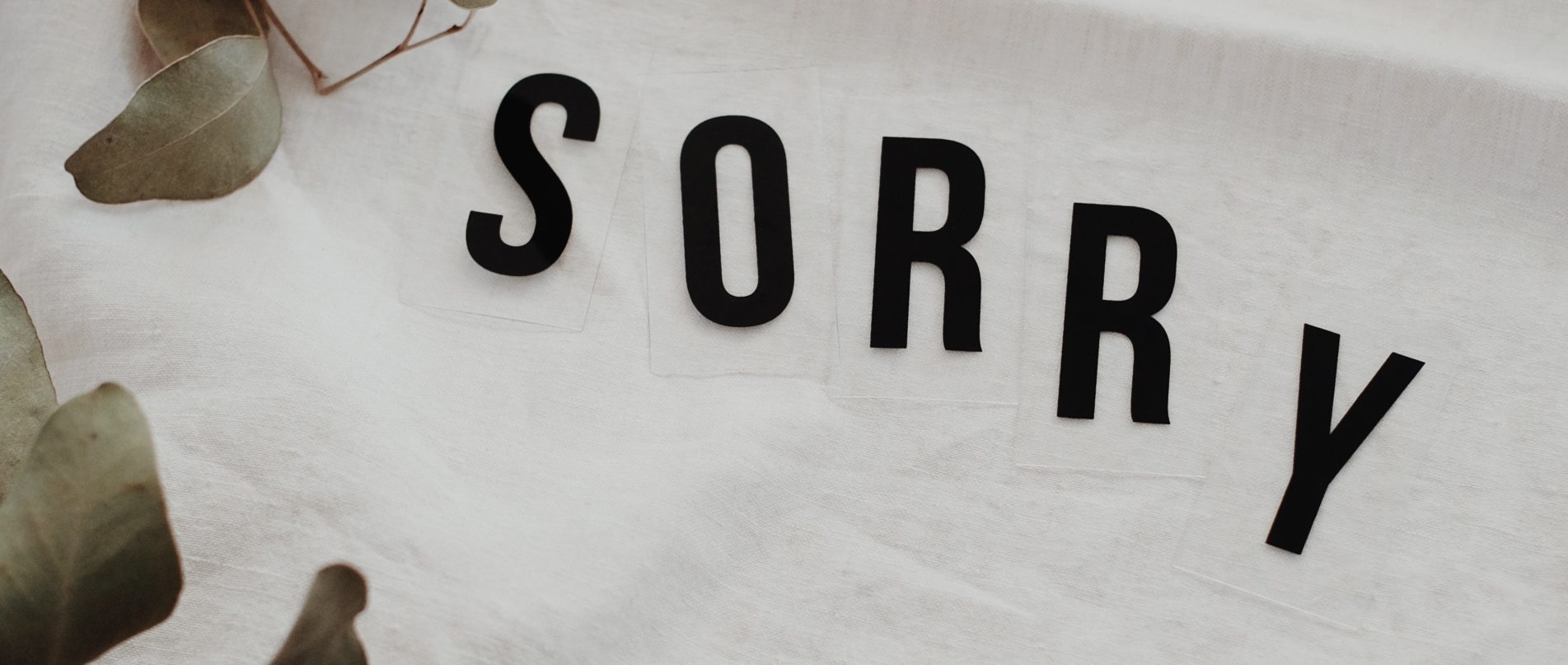
Prompt Images
[1950s’ game show music plays over the title card: How to … Apologize in block writing, the dark blue of the background contrasting with the ice-colored letters.]
The title card fades away to reveal Tom Hanks standing in the glow of a singular spotlight, wearing a navy quarter-zip sweater and khakis. (Fun fact: Tom Hanks was selected as he is one of the few American figures that still elicits positive reactions from multiple demographics).
He smiles and walks forward, the spotlight following his movements across the pale blue stage.
TOM:
Hey, it’s me, Tom Hanks. Thank you for joining me today. I’m sure it wasn’t easy, after all no one likes to have these conversations. These days, we’re having trouble even admitting that we need to have them. So, for this conversation, we’re going to go old school.
An old-fashioned chalkboard comes into frame, with yellow wood sides and a green board. Tom picks up a perfect piece of white chalk from the tray at its base, and begins to write.
TOM:
I’m sorry.
Scrawling out the word, his hand stops moving as he adds the tail to the y.
TOM:
It’s a hard word to say一Elton John would suggest it’s the hardest, but frankly, I’ve always thought that was “Sesquipedalian.”
Tom laughs a belly-shaking laugh, but it quickly peters out as he remembers he’s on a soundstage where few people are watching him and even fewer can speak and offer him feedback as to how it is going.
TOM:
I can hear you now saying, “Tom, I don’t need a lesson in apologies. I’m good.” And I want to believe you, but you and I are together for a reason, and that reason is that based on recent experience, it seems as though people are struggling more than ever to say what really amounts to three little words一and not the ones that send our hearts pitter pattering. Actually, some may say that vulnerable act of an “I love you” is easier than “I am sorry.” Why do you think that is?
Tom cocks his head and stares straight into camera, before turning to the chalkboard and writing again.
TOM:
In recent years, there seems to be a re-emergence of the belief that when we are confronted with something we’ve done wrong, we should double down on it. Because it makes us look tough, masculine, and right—even when we’re clearly wrong. We think that it gives us a certain type of bravado and admirability.
Tom writes each of the descriptors, but under bravado scratches three lines beneath, the chalk clicking against the board with each stroke.
TOM:
When in all reality, it just makes us look like assholes.
Turning away from the board, he offers that same knowing look with a hint of contrition.
TOM:
I am sorry for the language, but sometimes there is no substitute. See? That wasn’t so hard. Although we may term that apology as a non-apology apology. Best to stay away from those. If you have to follow up your sorry with a but or an if, it most likely is not to come across as sincere or get people on your side. Especially if the if is followed by an “if I offended you.”
Laying the chalk down on the tray, Tom takes the few steps over to the beige wood-top desk beside the board and props himself on the corner of it.
TOM:
You know, many people find it respectable when someone admits they’re wrong. Hard to believe, but it’s true. Just take a look around at our current leaders. Do you see a lot of respect? Do you hear that word as much as you used to? From my perspective, it’s a “no” on both counts. Doubling down, it makes you look like you can’t take accountability, but an apology? Well, that says that you’re willing to listen and learn and that you respect the people on the receiving end of it enough to say it. People value that far more than yelling and name calling. Now, that doesn’t mean they’re going to respect you. There are things you can’t come out of unscathed, and I recommend you watch the next videos in our series, How to … not be a Racist, How to …Interact with Women without Harassing Them, How to … say no to Discrimination, and How to … Concede an Election without Overthrowing the Government, for some further advice on how to handle those situations. In most cases, though, an apology will make an issue more manageable, and help you out of the corner you’ve backed yourself into. Also, it’s just the right thing to do.
With a side-eye, he shrugs.
TOM:
But who cares about that right? Let me tell you one more thing that actually might convince you.
Tom leans into the camera lens, beckoning it closer with two waves of his fingers.
TOM:
You can still be tough and masculine if you apologize. A take-no-prisoners attitude is not a requirement of success. If it was, I wouldn’t be sitting here with six Oscar nominations and two statues.
Some of the contentedness slips from his face as folds his arms across his chest, and buttons his mouth in what can only be described as frustration.
TOM:
Although, I really should have at least 10. Meryl has more than 20, and I’m sitting here sitting on six. It’s bull.
But, this series is not the place to air out my grievances, and I apologize to the Academy and the viewers of this program for that added commentary.
The smiling Tom returns as he throws out his hands.
TOM:
And there we are, another apology! Let’s have you try one! Look, we’ll even start with a clean slate.
Crossing back to the chalkboard, he grips it by the bottom and lifts the board, flipping it to its unblemished side.
TOM:
What is something you’ve done that you need to apologize for? I don’t want to hear that there isn’t anything. We all have at least one hundred. I mean, I apologized to a volleyball for losing it in the ocean, may Wilson rest in peace. Even Woody had to apologize to Buzz for being so territorial. So, what’s yours?
He waits a few seconds, and begins to nod.
TOM:
Good, I’m going to say you have one. I want you to think on that real hard. How you felt when it happened, why you did it, the release it will be to let go of any pain or trouble with it. That’s another benefit of apologizing, it’s therapu—
Tom catches himself, his eyes widening, realizing that their target audience may view such a topic as “soft” and shut down or just flat out turn off the video.
TOM:
(clears throat) Enough about that. Let’s get down to brass tax. Now that you have it in your head, picture yourself standing in front of the person or group that you want to receive it. You’re there. They’re waiting for you to speak. What do you say?
In letters large enough to fill the board, Tom writes, “I’m sorry.”
TOM:
Say it with me. I’m …
After a few beats, he cups his hand around his ear.
TOM:
I can’t hear you. Come on, I know you can do it. I’m … sorry.
From Tom and a not-so-live studio audience comes clapping.
TOM: See? I knew you could do it, even though it was hard, and for that I respect you. Or, we’ll, I don’t really know what you apologized for, so to be on the safe side, let’s say I respect your apology..
Now, stay tuned for Part where we’ll build upon this and talk about how to explain why you’re sorry and really mean it. Before that, make sure to get your certificate saying you passed this round from your supervisor, campaign manager, lawyer, or parole officer. And yes, my eagle-eyes friend, that is a printed signature from me on it! Congrats!
Waving from the center of the screen, Tom waves, the light fading around him.
TOM:
See you soon!
Screen fades to black, with only two lines of text remaining in powder blue.
FIFTEEN MINUTE SNACK BREAK
A Social Emotional Skills for Dummies Production



